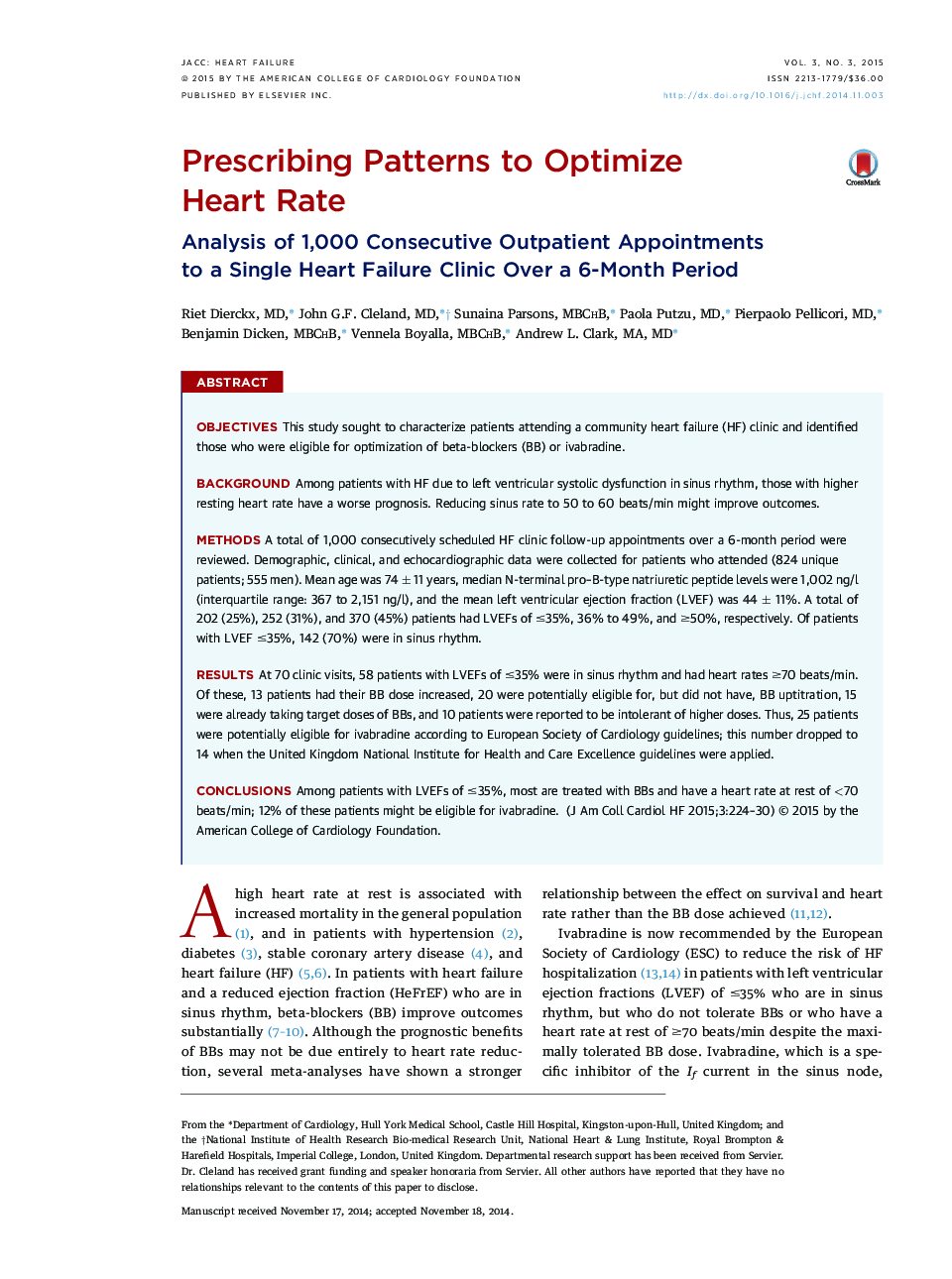| Article ID | Journal | Published Year | Pages | File Type |
|---|---|---|---|---|
| 2942684 | JACC: Heart Failure | 2015 | 7 Pages |
ObjectivesThis study sought to characterize patients attending a community heart failure (HF) clinic and identified those who were eligible for optimization of beta-blockers (BB) or ivabradine.BackgroundAmong patients with HF due to left ventricular systolic dysfunction in sinus rhythm, those with higher resting heart rate have a worse prognosis. Reducing sinus rate to 50 to 60 beats/min might improve outcomes.MethodsA total of 1,000 consecutively scheduled HF clinic follow-up appointments over a 6-month period were reviewed. Demographic, clinical, and echocardiographic data were collected for patients who attended (824 unique patients; 555 men). Mean age was 74 ± 11 years, median N-terminal pro–B-type natriuretic peptide levels were 1,002 ng/l (interquartile range: 367 to 2,151 ng/l), and the mean left ventricular ejection fraction (LVEF) was 44 ± 11%. A total of 202 (25%), 252 (31%), and 370 (45%) patients had LVEFs of ≤35%, 36% to 49%, and ≥50%, respectively. Of patients with LVEF ≤35%, 142 (70%) were in sinus rhythm.ResultsAt 70 clinic visits, 58 patients with LVEFs of ≤35% were in sinus rhythm and had heart rates ≥70 beats/min. Of these, 13 patients had their BB dose increased, 20 were potentially eligible for, but did not have, BB uptitration, 15 were already taking target doses of BBs, and 10 patients were reported to be intolerant of higher doses. Thus, 25 patients were potentially eligible for ivabradine according to European Society of Cardiology guidelines; this number dropped to 14 when the United Kingdom National Institute for Health and Care Excellence guidelines were applied.ConclusionsAmong patients with LVEFs of ≤35%, most are treated with BBs and have a heart rate at rest of <70 beats/min; 12% of these patients might be eligible for ivabradine.
